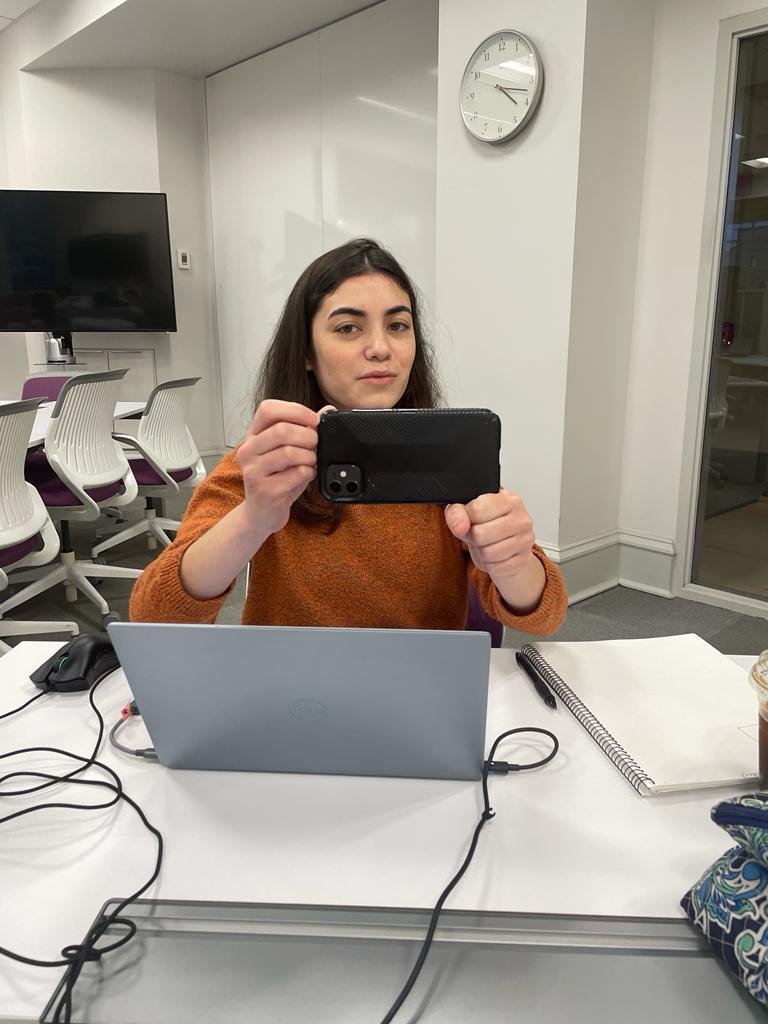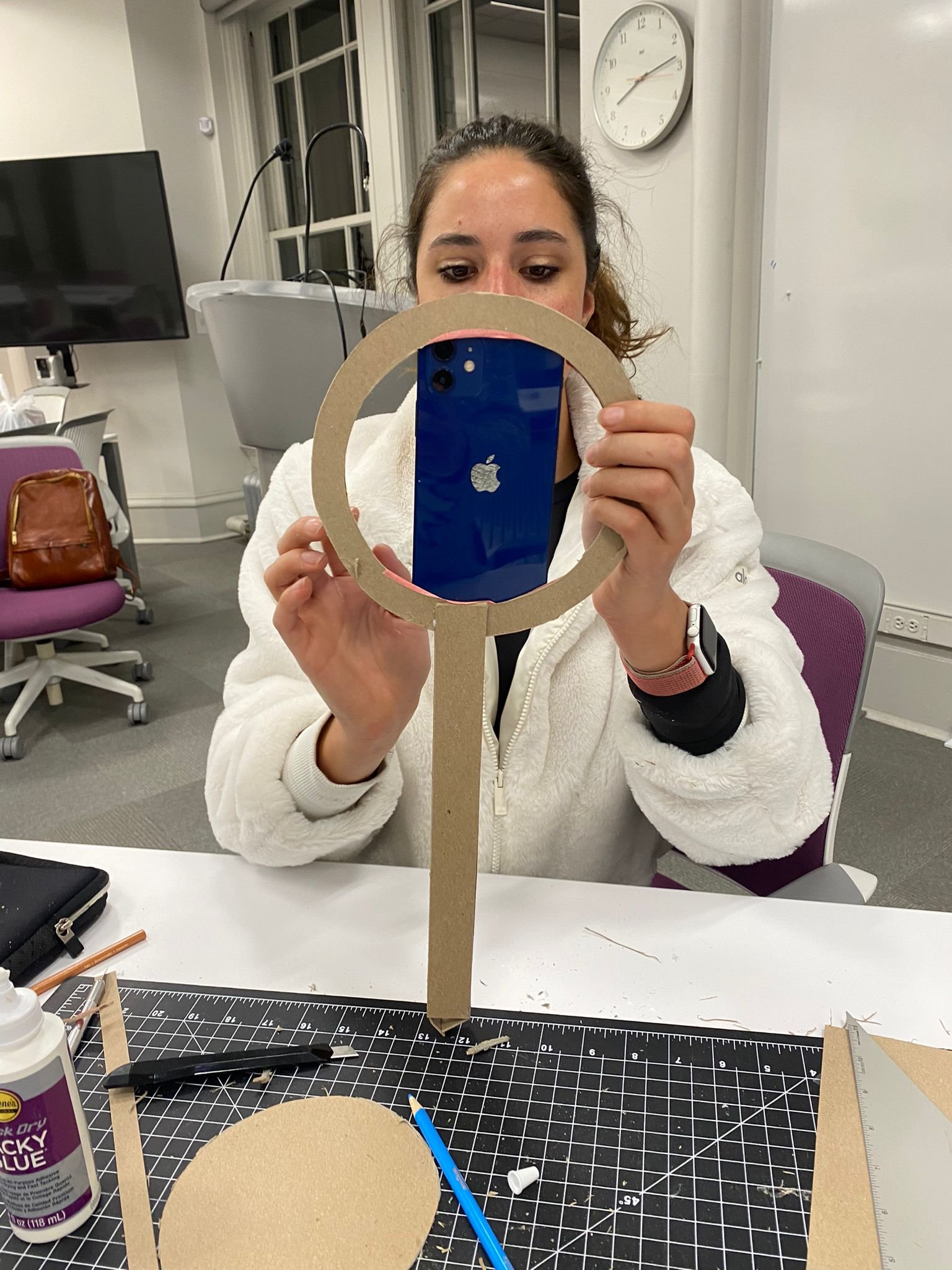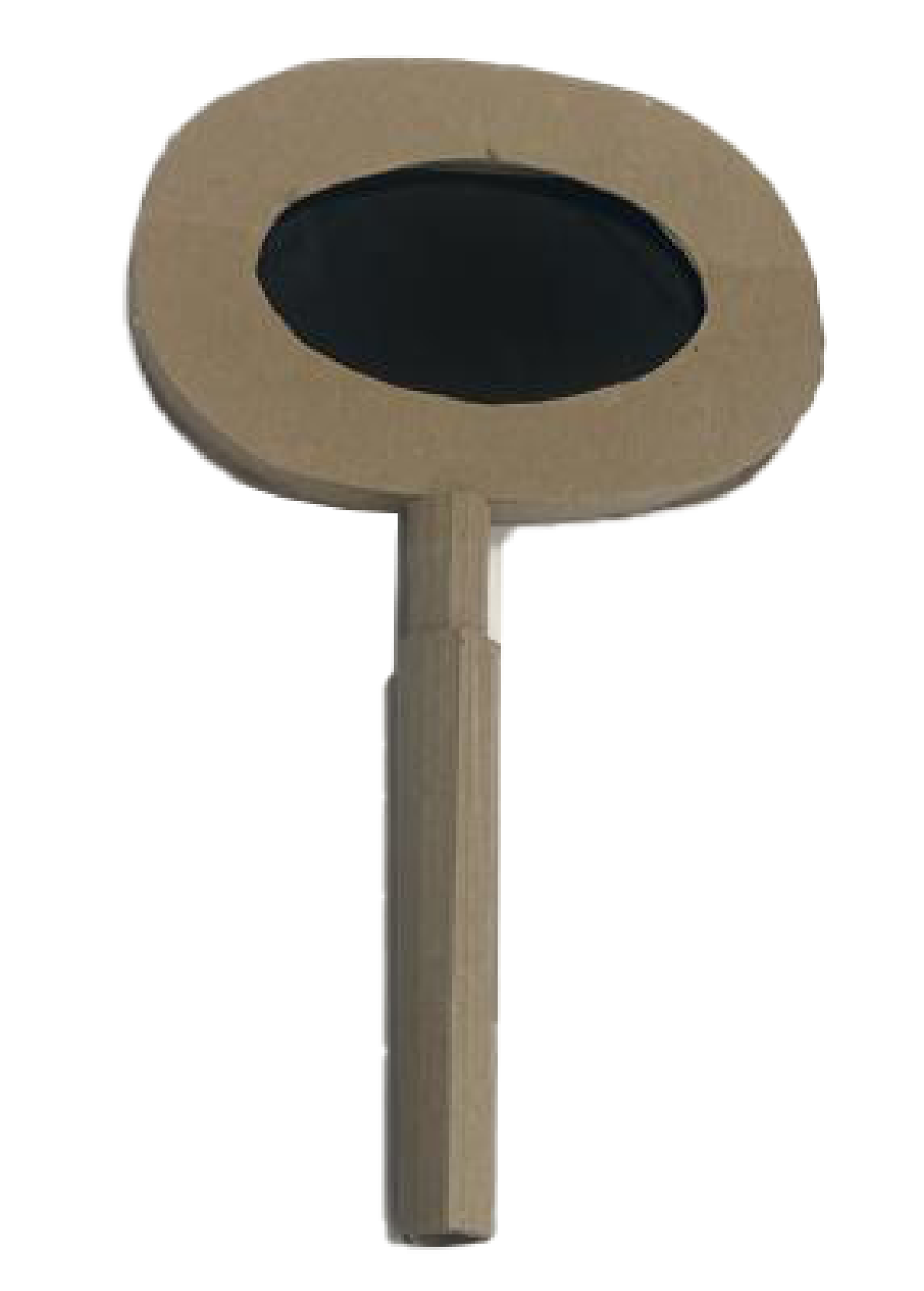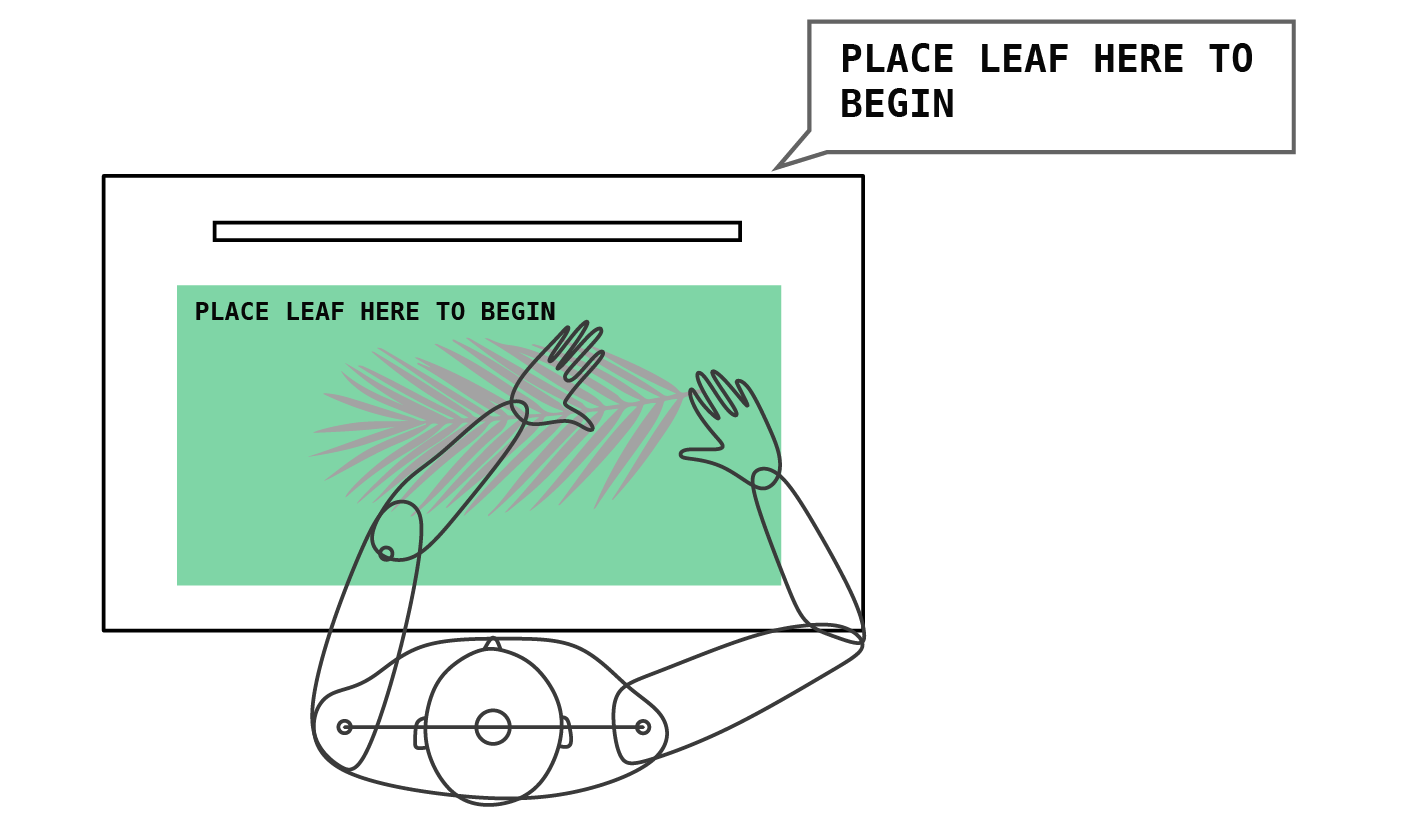
The sensitive Botanist
PROJECT DETAILS
LOCATION: PITTSBURGH, PA
WHEN: FALL 2023
TYPE OF WORK: ACADEMIC
TEAMMATES: EUGINA CHUN, LIA PURNAMASARI, AUDREY REILEY
PROFESSORS: DINA EL-ZANFALY, ANDREW TWIGG
COURSE: INTERACTION DESIGN STUDIO I
PROJECT OVERVIEW
The Sensitive Botanist examines the potential for new interactive experiences within a botanical garden setting that enhance and augment the visitor experience and get them to notice, engage with, and appreciate the main artifacts on display within that cultural institution: plants. In our project, we attempt to create conditions that gets visitors to notice and appreciate the minutia of the plants they encounter so that they can better see their value and become inspired to care for, learn about, and connect with them by thoughtfully stimulating their sense of touch, vision, and smell; by teaching them new vocabularies to describe those sensations; and by drawing meaningful connections between people and plants.
More specifically, in this project we strive to improve the user experience for patrons at Phipps Conservatory and Botanical Gardens in Pittsburgh. We wanted to know how we could design for a visitor experience at Phipps that directly aligned with Phipps’ mission which is “to inspire and educate all with the beauty and importance of plants.” Below I describe our design process and our proposal for a set of new interactive experiences at Phipps that I claim offers visitors at Phipps new perspectives on plants.
Our goal is to offer visitors at Phipps new perspectives on plants by:
Engaging their senses of touch, smell, vision, and hearing.
Offering them new botanical vocabularies to describe those sensations and recognize plants.
Establishing meaningful connections between them and the plants they encounter.
RESEARCH
ON SITE OBSERVATIONS
To improve the visitor experience at Phipps, we first had to discover what about the current patron experiences could be improved and then incorporate those discoveries into new interactive experiences we could both design and build. To find what the design opportunities were, we visited Phipps on several occasions at different times of the day and of the week, and closely observed visitors in eight different spaces. Unobtrusively seated at strategic vantage points, we each took notes about what we saw people doing and heard people saying over the course of twenty minutes in different spaces throughout.
From those observations we found that many people wanted to touch plants but weren’t sure if that was allowed, and others weren’t able to identify the plants they were interested in, and wanted to know more about a the origins and uses of certain plants.
INTERVIEWS
Next, we conducted interviews with visitors who agreed to talk to us and asked them the reason for their visit that day, what their favorite part or most memorable part of Phipps was and why; what they hoped to learn or experience at Phipps; and what kind of interactive experiences they would be excited about. Through visitor interviews we found again that people wanted to touch plants, that they wanted to know more about the plants themselves, like what they were, where they came from and what they were used for and how to care for them. They also explained that they enjoyed the sensorial experiences of smells and visual interest that the plants around them offered.
Finally, before diving into design explorations we met with three Phipps experts including the horticultural director, the children’s programmer, and the nutrition lead. Through those interviews we identified patron demographics and understood the needs and opportunities at Phipps as viewed by members within its organization. This led to questions such as: How can we shift the expectations of visitors at Phipps so that they are eager to engage with plants that are less showy and obvious (like flowers), but are important from an ethnobotanical perspective? And how can we cure visitors of their “plant blindness” so that they pay better attention to plants in their everyday lives? How can we attract, engage, and demonstrate the value of Phipps to a wider audience including younger generations and culturally diverse groups?
DESIGNED EXPERIENCE:
THE BOTANIST GLASS
Design Principle: Engage The Senses
In this experience, visitors are given a special, botanical magnifying glass that uses augmented reality to teach visitors about plants and gets them to pay attention to them by prompting them to notice certain plants with scientific, cultural, and sensorial clues. The experience is akin to taking a walk with a botanist, or a horticulturally savvy friend, who is keen on sharing both their enthusiasm and expertise on plants. With the glass, visitors are asked to observe, listen to, touch, and smell plants and can “collect” the species they are able to correctly identify with the clues. The clues are designed to get people to interact with plants themselves, the glass is just a facilitating interface that can spark their interest in the plants. The collection feature also lets the users take home a part of their visitor experience since they are offered a physical card at the end of their visit that lists and displays all the plants they have collected throughout the experience.
One major feature of the Botanist Glass is a sensorial guessing game. This feature is directly related to our goal of engaging the senses. In this experience the glass asks people to engage their senses by presenting them with clues that might ask them to notice a vibrant color, waxy leaf texture, or a cinnamon and vanilla scent.
FEATURE:
sensorial guessing game
DESIGN PRINCIPLE: ENGAGE THE SENSES
Design Principle: Offer new botanical vocabularies to describe sensations and aid plant recognition.
Another major feature of the Botanist Glass is educational plant recognition, which is directly addressing our goal of teaching people to recognize plants. The glass can recognize the user’s proximity to a specific plant and provides information based on their distance from the plant they want to know about. The glass also establishes meaningful connections between users and people by using friendly first-person language that personifies plants in ways that inform visitors of their importance from an ethnobotanical perspective.
FEATURE:
plant identification
DESIGN PRINCIPLE: OFFER NEW BOTANICAL VOCABULARIES TO DESCRIBE SENSATIONS AND AID PLANT RECOGNITION.
FEATURE:
navigation
Design Principle: Towards Calmer Technologies
In our first iteration of the botanist glass we proposed a phone app called “the botanist” that would gamify plant collection. Although using a smartphone would enable us to use many of it’s technological features, we worried that phone notifications outside of The Botanist app would deter from the user’s experience. We wanted to create an experience that more seamlessly blended the physical and digital realms in the ways proposed by O’Keefe, et. al in Blended Experiences [3], and to use “calm technologies” that do not further exacerbate our current problems with our attention demanding technologies [2].
In the second iteration, we re-framed the smart phone as a Botanist Glass. This tool would no longer be the user’s phone, and instead would be provided by Phipps. Additionally, it would be encased in a special holder that makes the smartphone feel less like a phone and more like the novel Botanist Glass it is. Presenting the smartphone as a special tool is inspired by Nina Simon’s Opening Up the Museum TEDTalk, where she explained that visitors at a museum were more engaged in writing activities when presented with special paper as opposed to plain white paper [5].
technologies leveraged
smartphone with camera
3D printed and painted botanical glass case
ProtoPie
early physical prototyping



EARLY STORYBOARD - TABLE ENCOUNTER
EARLY STORYBOARD - TABLE INTERFACE
Design Principle: Offer new botanical vocabularies to describe sensations and aid plant recognition.
Our interactive table seeks to get people to recognize plants by offering them new plant vocabularies that get them to pay attention to them in ways they haven’t done before. For example, it asks them to describe venation patterns and edge shapes with precise, descriptive language.
Prompt: What shape are my edges?
entire
smooth
ondulate
wavy
serrate
toothed
Prompt: Describe my veins.
palmate
several main veins
parallel
parallel veins
pinnate
one main vein
Design Principle: Establish meaningful connections between people and the plants they encounter.
Next our table seeks to establish meaningful connections between plants and people by explaining the plant’s cultural significance. For example, their presence in common foods, traditions, and rituals, or the history behind their names.
Did you know?
“my leaves were used in central and south american cultures as a medicinal plant to treat fever, stomach problems, and skin diseases.”
“my leaves are sometimes used in rituals and ceremonial decorations.”
my latin name, theobroma translates to “food of the gods”
“I was named after the fiddle instrument.”
Interactive learning experience with a fiddle leaf fig
1. Participant is asked to indicate the shape of the leaf they are learning about and is given descriptive terms to select from.
2. Participant selects an answer by tapping the shape description that matches their leaf.
3. Participant receives feedback indicating their answer is correct and that teaches the origin of the plant name.
4. Participant is asked to observe and indicate the edge shapes of their leaf and is given descriptive vocabulary and imagery.
5. Participant lifts their leaf to compare and evaluate their response.
6. Participant sets down leaf and selects the “ondulate” option to describe the leaf’s edges.
Interactive PLANT IDENTIFICATION experience ON DEMO DAY
1. Visitor is touching leaves in the bucket that she will place onto the interactive table.
2. Visitor places selected metallic palm leaf onto the table and sees a display that identifies it.
3. Visitor enjoying the interactive experience.
4. Another visitor selects a leaf from the bucket to place onto the interactive table.
5. When the visitor places her leaf on the table, a display appears to the side identifying it as “Philodendron Xanadu”
6. Visitor is eager to identify more leaves from the bucket!
PROTOTYPING | INITIAL SYSTEM DIAGRAM
Our plant ID station went through several iterations. This is our initial prototype, where we were using an iPad to recognize the leaves and were displaying the recognition on an iPad screen.
technologies leveraged
Conclusion:
The Sensitive Botanist offers a new set of immersive multi-sensory visitor experiences for Phipps Conservatory and Botanical Gardens that align with Phipps’s mission of inspiring and educating people on the beauty and importance of plants. Our research, which included detailed observations and interviews, helped us identify design opportunities. Through that research we understood that visitors had a strong desire to touch and interact with real plants and to learn more information about them. These opportunities led us to develop a set of guiding design principles that aim to create conditions that stimulate visitors’ senses, offer them new botanical vocabularies, and establish meaningful connections between them and the plants they encounter. We also emphasize the non-intrusive integration of technology since the interactions we design for are between people and plants, not people and gadgets. The design concepts include the Botanist Glass and the Plant Identification Station. The Botanist Glass uses augmented reality to promote engagement with plants and aids learning by asking visitors to engage their senses by touching, smelling, and looking closely at plants. The Plant Identification Station uses machine learning and projection mapping to create an interactive table that encourages interaction with real plants and teaches visitors to describe them with botanical vocabularies and provides information about their cultural importance.
Our incorporation of augmented reality, machine learning, and other emerging technologies that get visitors to engage with the real, physical artifacts of a cultural institution sets our project apart from current approaches to interaction design where there isn’t as direct of a link or interaction with the artifacts that the cultural institution is celebrating and promoting. Our work provides an innovate approach to interaction design in the context of a botanical garden and in the context of sensorial experiences.
Finally, this project description provides a comprehensive overview of our design process, from initial research to prototyping, and offers practical insights for enhancing the visitor experience at botanical gardens and cultural institutions more broadly. Our emphasis on enabling human-artifact or human-plant interactions and using technology in non-intrusive ways ensures a blended and balanced approach toward interaction design that may be applicable and relevant for interaction design concepts at different types of cultural institutions. Our research methodology and design principles could be used to develop new concepts for interactive experiences at a wide range cultural institutions that want to offer patrons new ways of interacting with and learning about their artifacts.
Next Steps | Further Development
I can envision a plant-identification station integrated into nearby parks that people could use for broader educational purposes. For example, imagine having one at your local park where you could place any kind of leaf, flower, fruit, acorn, or other real/physical plant object. The table could identify it and provide interesting information about it. This could be a fun way to get people to pay attention to the plants around them and know more about their importance. I can also envision enhancements to the Botanist Glass that would be exciting for people to use. For example, if it was possible to integrate a filter that shows UV light, people could see flowers the way pollinators do. I imagine a fun “bee mode” where people can look at plants in ways that approximate how other species might see them. Finally, I would like to find ways to measure the effectiveness of our interactive exhibits in achieving our design goals – I would like to understand if and how people are learning about plants through our designed experiences and how that learning might be influencing their perception of the environment.
Plant Identification Station - rendering imagined by Midjourney from author prompts
Bee View - Photo collage by author from photos by Michelle Wong for the Lady Bird Johnson Wildflower Center
Acknowledgements
Special thanks to our friends at Phipps, Liane Moos and Ben Dunigan for their help, insights, and leaves!
references
[1] ISHII, HIROSHI. 2008. “TANGIBLE BITS: BEYOND PIXELS.”
[2] WEISER, MARK, AND JOHN SEELY BROWN. 1997. “THE COMING AGE OF CALM TECHNOLOGY.” IN BEYOND CALCULATION: THE NEXT FIFTY YEARS OF COMPUTING, EDITED BY PETER J. DENNING AND ROBERT M. METCALFE, 75–85. NEW YORK, NY: SPRINGER.
[3] O’KEEFE, BRIAN, TOM FLINT, MICHAEL MASTERMAKER, MIRIAM STURDEE, AND DAVID BENYON. 2021. “DESIGNING BLENDED EXPERIENCES.” IN PROCEEDINGS OF THE 2021 ACM DESIGNING INTERACTIVE SYSTEMS CONFERENCE, 309–21. DIS ’21. NEW YORK, NY, USA: ASSOCIATION FOR COMPUTING MACHINERY.
[4] PHIPPS CONSERVATORY AND BOTANICAL GARDENS: PITTSBURGH PA. PHIPPS CONSERVATORY. (N.D.). HTTPS://WWW.PHIPPS.CONSERVATORY.ORG/ABOUT
[5] SIMON, NINA. 2012. OPENING UP THE MUSEUM: NINA SIMON @ TEDXSANTACRUZ. YOUTUBE. RETRIEVED DECEMBER 18, 2023, FROM HTTPS://WWW.YOUTUBE.COM/WATCH?V=AICWIH1VZ9W.









































